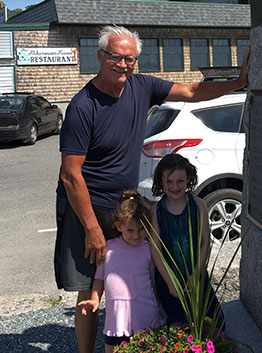The visit to Orlando by President Obama and Vice President Biden surely gave some comfort to the people of that city, first and foremost, to the grieving families and the gay community. But only the passage of time and sustained mutual support will relieve the profound grief, despair, and anger that so many feel.
After all, nothing prepares people to absorb the horror, shock, and pain when hate, violence, and guns fuse and descend on a city. Orlando is no different. The mass killing of 49 people, only because they were following their hearts and desires, tore a gaping wound in its emotional fabric.
What adds to the grief is that this terrible hate crime took place in a space where the victims and survivors were able to love safely, freely and unapologetically.
The killer knew that. And it informed his twisted calculus and actions.
That the perpetrator, whose humanity had left him long before he pulled the trigger on his automatic assault weapon, made an allusion to ISIS in his conversations with the police, doesn’t make it any less of a hate crime. It tells us something, but exactly what, we don’t yet know. And political leaders should be careful not to draw any premature conclusions – not least a decision to rain down bombs on the traumatized people of Syria. We tried that before in the same region and look where it landed us.
At this moment, appeals to pass gun control legislation make obvious sense, but if nothing was done in the wake of Newtown it is hard to believe that something will be done now. The likelihood is that Republican lawmakers, dutifully following script, will act as the water boys of the gun manufacturers, echo right wing radio talk show hosts, coddle their reactionary grassroots base, and blame the president.
Which is ironic because the president by and large stood tall, spoke eloquently, and acquitted himself quite well this week. The same however can’t be said about Hillary or Bernie. Bernie was slow to the switch, while Hillary’s narrative pivoted on the “fight against international terrorism,” which we know only too well can be very problematic, to say the least.
But what troubles me much, much more is the reaction of Trump. His remarks have been off the charts, indecent, and inflammatory. He has made no effort to give comfort to the families or unify the nation. Everything that has come out of his mouth has sown hatred and division.
His talking points are an affront to our country’s best values, traditions, and habits of everyday life — solidarity, neighborliness, celebration of differences, pride in our diverse peoples and cultures, welcoming place to immigrants, and commitment to equality, peace, and justice.
Trump hung his hat this week on suspicion, paranoia, fear, and retaliation. He repeated that all Muslims, including those born here, are strangers to be shunned and despised, even hunted down, locked up, tortured, and deported. In his view, whole regions of the world are enemy zones and prime targets for the unrestrained use of military force.
I have to hope that the unintended consequence of all this is to give millions reason and incentive to do whatever is necessary to defeat Trump and his right-wing Republican cohorts in a landslide in November. Such an outcome would save our country from a very bleak future, create a favorable terrain to pursue a progressive agenda in 2017 and beyond, and constitute one way to honor the lives of 49 innocent people.
Over the next few months, progressive should join with labor and the many other social organizations in their efforts to register, speak to, educate, and bring voters to the polls on election day. This might not feel radical, but in this moment it is. It is counterproductive to squirrel ourselves off in initiatives that highlight this or that issue, or to spend too much time discussing the future of the “political revolution,” while keeping a distance from the practical tasks and conversations that are necessary to win the election.
Indeed, the challenge is to convince 70 million or more voters to cast a ballot for democracy, equality, economic security, and sanity. In the Democratic Party primary, Hillary received roughly 16 million votes and Bernie 12.5 million. It doesn’t take a math genius to figure out that much work needs to be done to convince approximately 45 million more voters to pull the lever for Hillary and other Democrats in the fall. No, Hillary isn’t the ideal candidate, but to insist on pure choices in this — or any other — election reflects a political immaturity that will leave the left on the margins of the struggle, during and after the election.
For radical social movements, Bernie’s included, the imperative is always to scale up and out, to embed themselves among particular sections of the people — working people, people of color, women, and the young — who possess – when united – the strategic power to turn protest actions into sustained challenges to the existing social order. But in recent years, no social movement, as promising as each has been, has able to do that.
Which brings me back to this moment. In the next few months, Bernie’s movement — and other social movements and the broadly defined non-sectarian left — have an opportunity not only to give a big-time licking to a right-wing extremist strongman, but also to extend and deepen their connections to these (strategic) sections of the people’s movement, and thus acquire transformative potential. Let’s hope we set aside sectarian and purist notions and practices and seize this moment.



